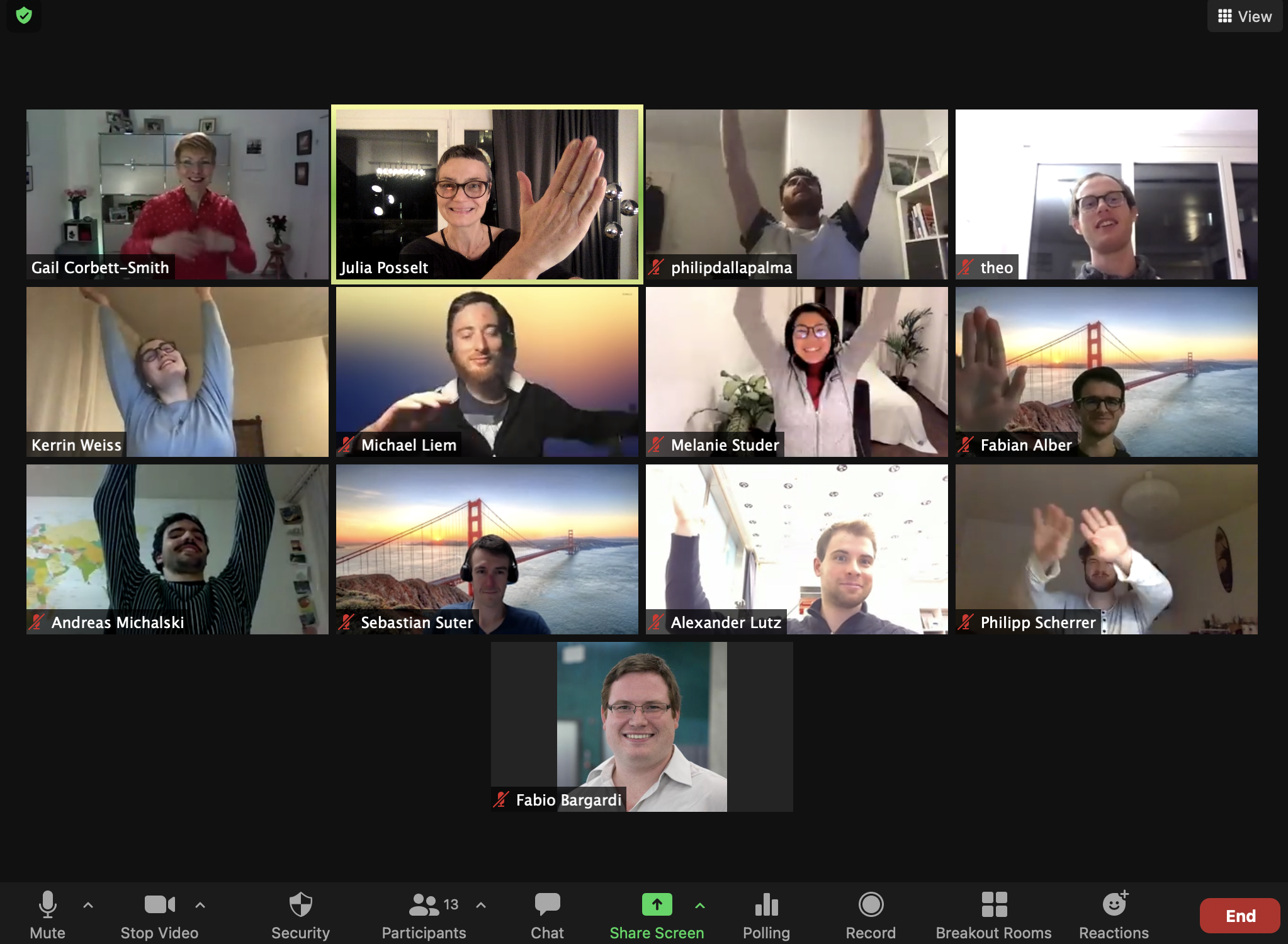In this online workshop, we expanded our horizons and learned more about ourselves in the topic of embodiment. Gail and Julia, two professional coaches, introduced us to the four elements model in leadership and embodiment. The model associates character traits and habits with each of the four elements: earth, water, fire and air. Here are some adjectives commonly attributed to each of the elements:
- Earth: steady, structured, reliable, stable, …
- Water: empathetic, harmonious, loyal, accepting, …
- Fire: directional, purposeful, energetic, decisive, …
- Air: creative, flexible, free, spontaneous, …
The goal of the workshop was to experience the four elements and find out whether there are elements in which we feel more comfortable than in others. In physical exercises, we embodied the elements one after the other. For the element of fire for example, we spotted objects in our room, pointed at them and walked straight towards them with purpose and focus while the exercise for the element of air was more like a dance, floating around and filling up the entire room. It was very interesting to discover the wide variety of different personalities among the attendees. We covered the full range, from very earthy to more airy people, from attendees who feel very comfortable in water to some with a lot of fire. We also briefly discussed how people with a tendency towards one of the elements would feel or behave in a certain situation and what strengths and limitations are associated with each element.
The four elements model is a simple framework to help us understand ourselves and others, and it enables us to experience how an embodied tool or framework can be used for creating better awareness and choice. It can be very useful to implement in certain situations: as a coach, for example, we can choose different approaches to increase somebody’s involvement in a team, depending on the element in which they appear to be in. Or we could do a suitable embodiment exercise to increase the flame within us when we find ourselves in a situation where we need our full focus. However, the model (or at least what we learned of it during this quick introduction) is quite simple and there is obviously much more to learn about the personality of each individual.
One of the participants shared their favourite experience: “I tremendously enjoyed the experience of how my body felt in the four elements. For example, being in the element of air reminded me how it felt being a child. Teams need a diverse distribution of elements and it is good to know what team members’ predispositions are, to then actively switch the modus-operandi if the current task/challenge/discussion needs it.”
